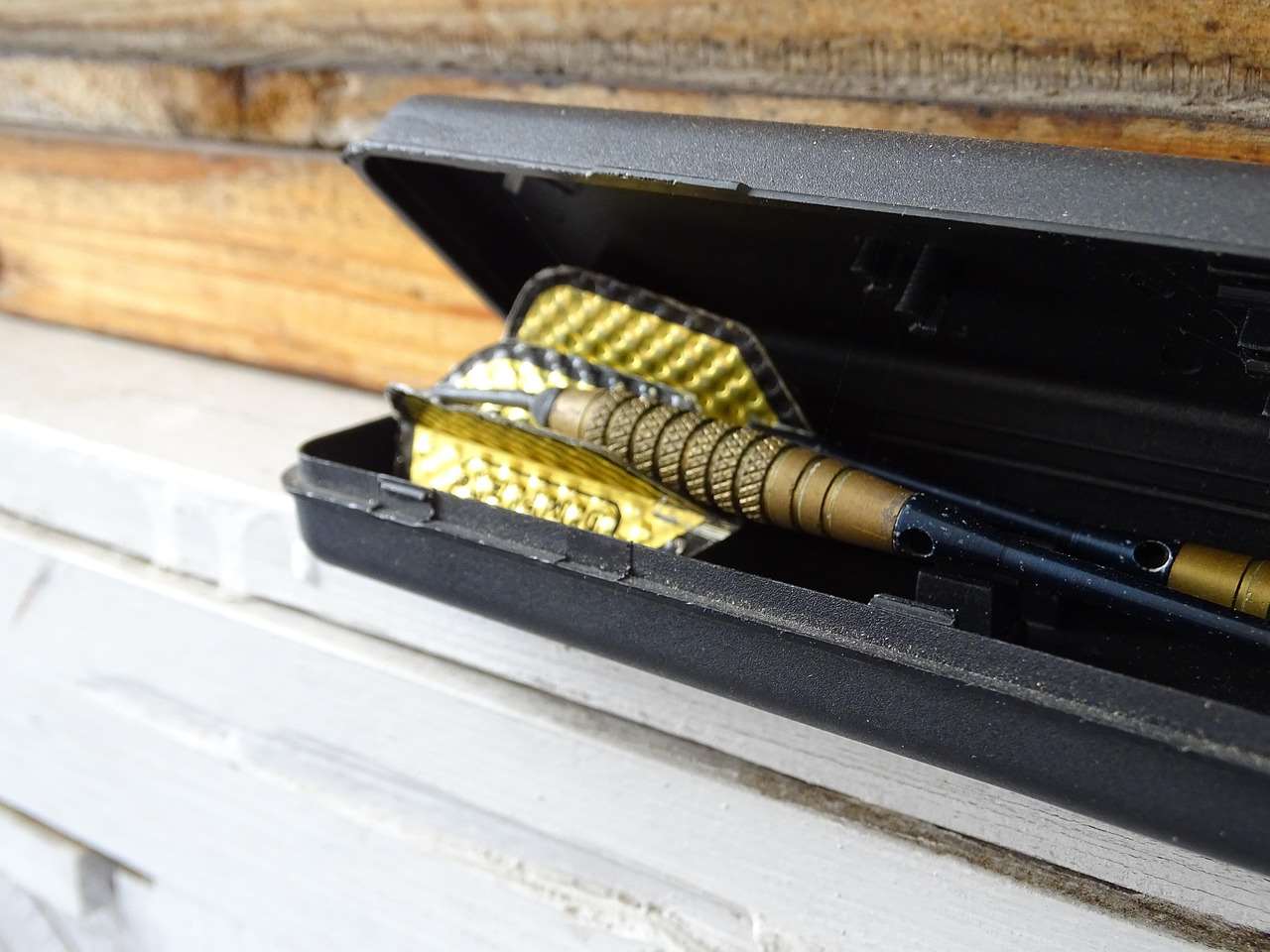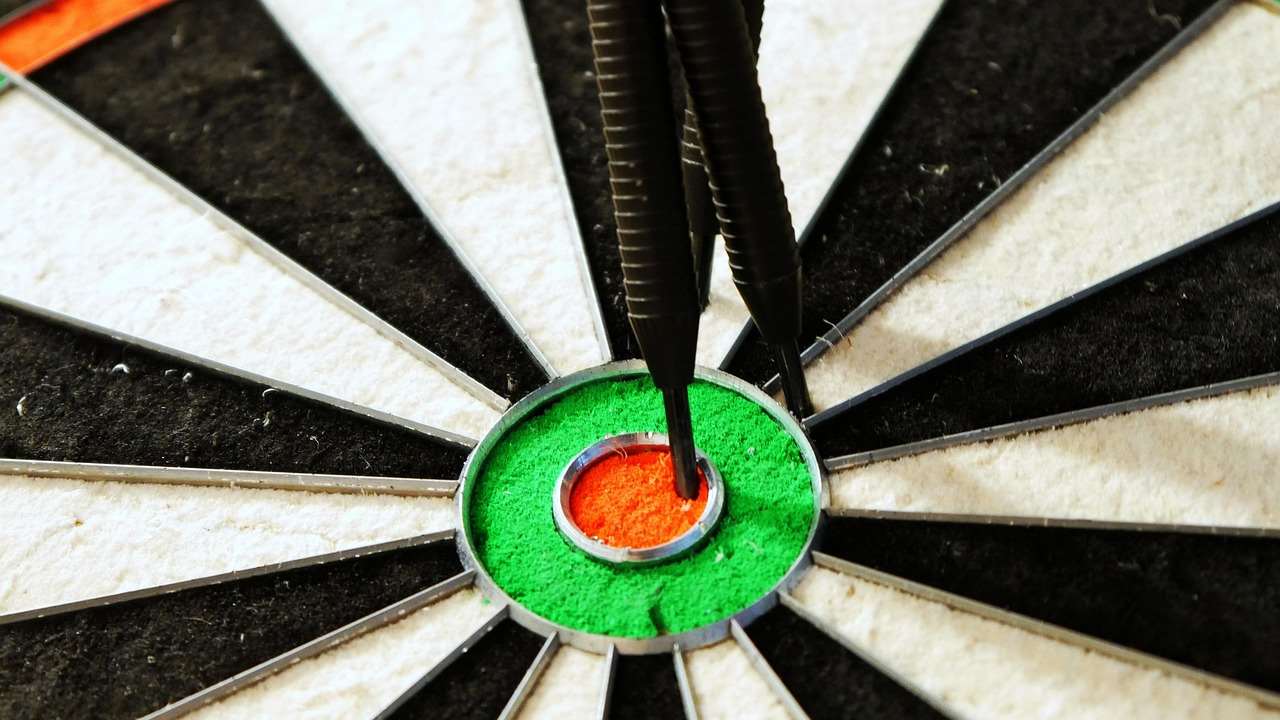Unlocking the secrets to consistent scoring in darts relies heavily on understanding **dartboard maths**. Simply put, it’s about knowing which combinations of numbers to target to quickly reach zero from any given score; this article will equip you with the strategic knowledge of calculating the most efficient routes to a checkout, along with the mental strategies needed to master the oche.
⚠️ Still Using Pen & Paper (or a Chalkboard)?! ⚠️
Step into the future! The Dart Counter App handles all the scoring, suggests checkouts, and tracks your stats automatically. It's easier than you think!
Try the Smart Dart Counter App FREE!Ready for an upgrade? Click above!
The Fundamentals of Dartboard Maths
At its core, **dartboard maths** involves calculating the optimal shot sequences to reduce your score to zero, ideally within the fewest number of darts. This often means aiming for specific numbers and multiples to leave yourself with a manageable checkout number, typically a double.
Understanding the Dartboard Layout
To begin, it’s crucial to understand the layout of the dartboard. The board is divided into 20 numbered sections, each with single, double, and treble scoring zones. The outer ring represents the doubles, the inner ring represents the trebles, and the bullseye consists of the outer bull (25 points) and the inner bull (50 points, often called the ‘double bull’ or just ‘bull’). Familiarizing yourself with the placement of high-value numbers like 20 and 19, and their relationship to lower numbers, is a fundamental step in mastering **dartboard maths**.
The 170 Checkout
The holy grail of **dartboard maths** is the 170 checkout. This requires a treble 20 (T20), a treble 20 (T20), and a double bull (D25), in that order. It’s the highest possible score you can checkout with and often the subject of much admiration and celebration when achieved. Practice this checkout frequently as it’s a significant indicator of advanced skill.

Checkout Charts and Common Combinations
Checkout charts are invaluable resources for any darts player serious about improving their game. These charts provide pre-calculated routes to finish from various scores, optimizing for fewer darts and minimizing the risk of busting (going below zero). Understanding these common combinations is a cornerstone of efficient **dartboard maths**.
Essential Checkout Numbers
Some checkout numbers are more common than others, and knowing these is crucial. Here are a few examples:
- 160: T20, T20, D20
- 100: T20, D20 or 20, D40 (or any combination that works)
- 81: T17, D15
- 40: D20
- 32: D16
- 20: D10
The double 20 is one of the most important shots in darts, and practicing hitting it consistently is key. Many pros will always leave themselves on a double when possible.
Practice these checkouts and familiarize yourself with the logic behind them, then explore more complex combinations. Understanding how to set up these finishes is essential for strategic play.
Thinking Ahead: Setting Up the Finish
Experienced players don’t just think about the current dart; they think ahead to the next one. A key element of **dartboard maths** is planning your shots to leave yourself with a manageable double to aim for. For example, if you have 85 left, you might aim for a single 5 to leave yourself with double 40. This requires mental calculation and an understanding of possible outcomes.
Strategic Considerations in Dartboard Maths
**Dartboard maths** is more than just knowing the checkouts; it’s about making strategic decisions based on the game situation, your strengths, and your opponent’s performance. Are you playing darts betting?
Choosing the Right Route
Sometimes, the mathematically optimal route isn’t the best choice for you. If you struggle with treble 20, it might be wiser to aim for a different treble and leave yourself with a slightly less efficient but more comfortable checkout. Consider your strengths and weaknesses when making these decisions. Furthermore, your opponent’s score and momentum can also influence your strategic choices in implementing **dartboard maths**.
Understanding “Busts” and Avoiding Them
A “bust” occurs when you score more points than needed to reach zero, or when you leave yourself with a score of one. Avoiding busts is a critical part of **dartboard maths**. For instance, if you have 32 left, aiming for a single 16 would be a risky strategy because if you hit a treble 16, you’d bust. Instead, you should go straight for the double 16. Knowing the numbers that can lead to busts is essential for smart play.
Managing Pressure and Nerves
Even the most mathematically sound plan can fall apart under pressure. Nerves can impact your accuracy and decision-making. Develop strategies for managing pressure, such as deep breathing exercises or focusing on your pre-throw routine. Remember to stay calm and trust your preparation. Don’t forget to practice your **dartboard maths** when under pressure to simulate match conditions.

Advanced Dartboard Maths Techniques
Once you’ve mastered the fundamentals, you can explore more advanced **dartboard maths** techniques to further refine your game.
Calculating Outs from Odd Numbers
Outs from odd numbers often present a challenge. One common strategy is to reduce the odd number to an even number that is easily divisible by two. For example, if you have 41 left, aim for the single 1 to leave 40 (double 20). Sometimes, the best strategy is to aim for the treble to get the best possible outshot! In this case, the best outshot is 41 – 3 x 13 = 2. So you leave yourself on 2, by aiming for the T13. This makes your **dartboard maths** more efficient!
Using the Bullseye Strategically
The bullseye is a high-value target, but it’s not always the best option. While it can be useful for setting up certain checkouts, it’s a small target and can be risky. Assess the situation carefully before deciding to aim for the bullseye, particularly if you need to leave a specific number.
Incorporating Averages
Understanding your averages can help you make informed decisions about your strategy. If you know you consistently score around 60 points per visit, you can plan your shots accordingly. Keep track of your averages and use them to guide your **dartboard maths** calculations. Consider using a Darts scoreboard app to track your progress and identify areas for improvement.
Practicing Your Dartboard Maths Skills
Like any skill, mastering **dartboard maths** requires dedicated practice. There are several ways to hone your mental calculation abilities and improve your strategic thinking.
Drills and Exercises
There are many drills and exercises you can use to practice your **dartboard maths**. One effective exercise is to start with a random score and calculate the best route to checkout. You can also use checkout charts to identify common combinations and practice hitting them repeatedly. Another fun drill is to play “around the clock,” aiming for each number in sequence. Consider setting up your darts set up in garage to provide a dedicated practice space, or invest in a dartboard with surround to protect your walls.
Mental Math Games
Engage in mental math games to sharpen your calculation skills. This could involve solving math problems quickly or playing games that require strategic thinking. These activities can improve your cognitive abilities and make you a faster and more accurate calculator at the oche. Also, familiarize yourself with common darts bullseye rules.
Simulated Games and Match Practice
The best way to apply your **dartboard maths** skills is to play simulated games and practice matches. This allows you to put your knowledge into practice under pressure and develop your decision-making abilities. Play against opponents of different skill levels to challenge yourself and adapt your strategy. Remember to analyze your performance after each game and identify areas where you can improve.

Resources for Improving Your Dartboard Maths
Numerous resources are available to help you learn and improve your **dartboard maths** skills. These resources can provide valuable information, tools, and guidance to enhance your understanding and performance.
Checkout Charts and Apps
Checkout charts are readily available online and in print. There are also numerous mobile apps that provide checkout suggestions and track your progress. Experiment with different charts and apps to find the ones that best suit your needs. The Darts scoreboard app is an excellent example.
Online Tutorials and Courses
Many online tutorials and courses offer in-depth instruction on **dartboard maths**. These resources often include videos, quizzes, and interactive exercises to reinforce your learning. Look for reputable sources and choose courses that are tailored to your skill level.
Books and Articles
Numerous books and articles cover the topic of **dartboard maths** in detail. These resources can provide a comprehensive understanding of the underlying principles and offer practical tips for improving your game. Read widely and critically to gain a well-rounded perspective. Pay close attention to the strategies employed by professionals and attempt to incorporate them into your own game plan.

Conclusion: Mastering Dartboard Maths for Success
In conclusion, **dartboard maths** is an essential skill for any darts player who wants to improve their game and achieve consistent success. By understanding the layout of the dartboard, learning common checkout combinations, and developing strategic thinking skills, you can significantly enhance your performance at the oche. Remember to practice regularly, use available resources, and stay calm under pressure. With dedication and perseverance, you can master **dartboard maths** and elevate your darts game to the next level. Start practicing those checkouts today and see the difference it makes in your scoring!
Hi, I’m Dieter, and I created Dartcounter (Dartcounterapp.com). My motivation wasn’t being a darts expert – quite the opposite! When I first started playing, I loved the game but found keeping accurate scores and tracking stats difficult and distracting.
I figured I couldn’t be the only one struggling with this. So, I decided to build a solution: an easy-to-use application that everyone, no matter their experience level, could use to manage scoring effortlessly.
My goal for Dartcounter was simple: let the app handle the numbers – the scoring, the averages, the stats, even checkout suggestions – so players could focus purely on their throw and enjoying the game. It began as a way to solve my own beginner’s problem, and I’m thrilled it has grown into a helpful tool for the wider darts community.